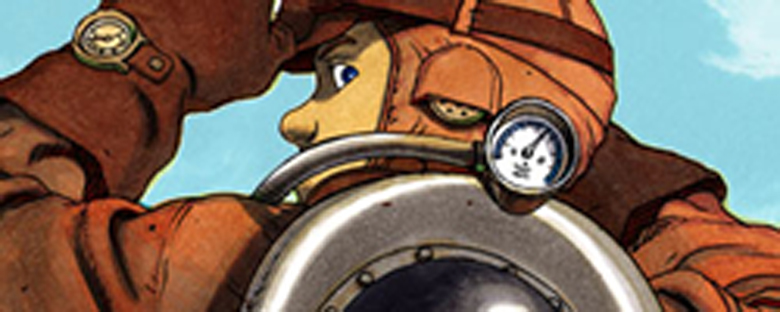Reviews
Katsuhiro Ôtomo
Japan, 2004
Credits
Review by Rumsey Taylor
Posted on 13 March 2005
Source 35mm print
The merits of Katsuhiro Ôtomo’s Akira are primarily attributed to its revolution. It is regarded as the first animé to gain popularity with Western audiences, and it was followed, in the subsequent decade, by dozens of animé titles that seemed to emulate its violence, profanity, or mystified science-fiction. To the unfamiliar viewer, these traits seemed to be the qualifications of animé, despite the genre’s geographic origin and medium. This imagined prerequisite is contested in Ôtomo’s full-length follow-up, Steamboy, set in Victorian England and absent of the juvenile hostility in the earlier film.
Despite its investment (it is the most expensive animé ever produced) and tried production (which began in 1995), Steamboy is an uncommonly disappointing effort. It should go without mention that the animation is accomplished; Otomo primarily employs cel animation despite the recent preference for 3-D (although it is used sparingly in this film), exampled in his peer Mamoru Oshî’s Ghost in the Shell II (which is definitely better than this film). Virtually every other facet of the film is poorly conceived. To name only the more prominent flaws: the dialogue is delivered in concentrated spurts of excitement (the characters shout each other’s names during crises); the word “steam” has the same ubiquitousness as “smurf” does in The Smurfs; and the characterizations are all superficial. The central dynamic of the film is the relationship between three generations of men in the same family (the Steam family), each invariably obsessed with the potential utility of steam and equipped with a Da Vincian ingenuity to invent some form of transportation on the fly.
Steamboy is replete with complicated mechanisms, gears and pipes, analogue keyboards, and wooden control panels: an Industrial Revolution rendered in the imagination of a fetishist of mechanisms. This is how the film may retain some appeal, as its periphery is robust and complex, and those very traits describe no character or relationship in the film.
We don’t do comments anymore, but you may contact us here or find us on Twitter or Facebook.



